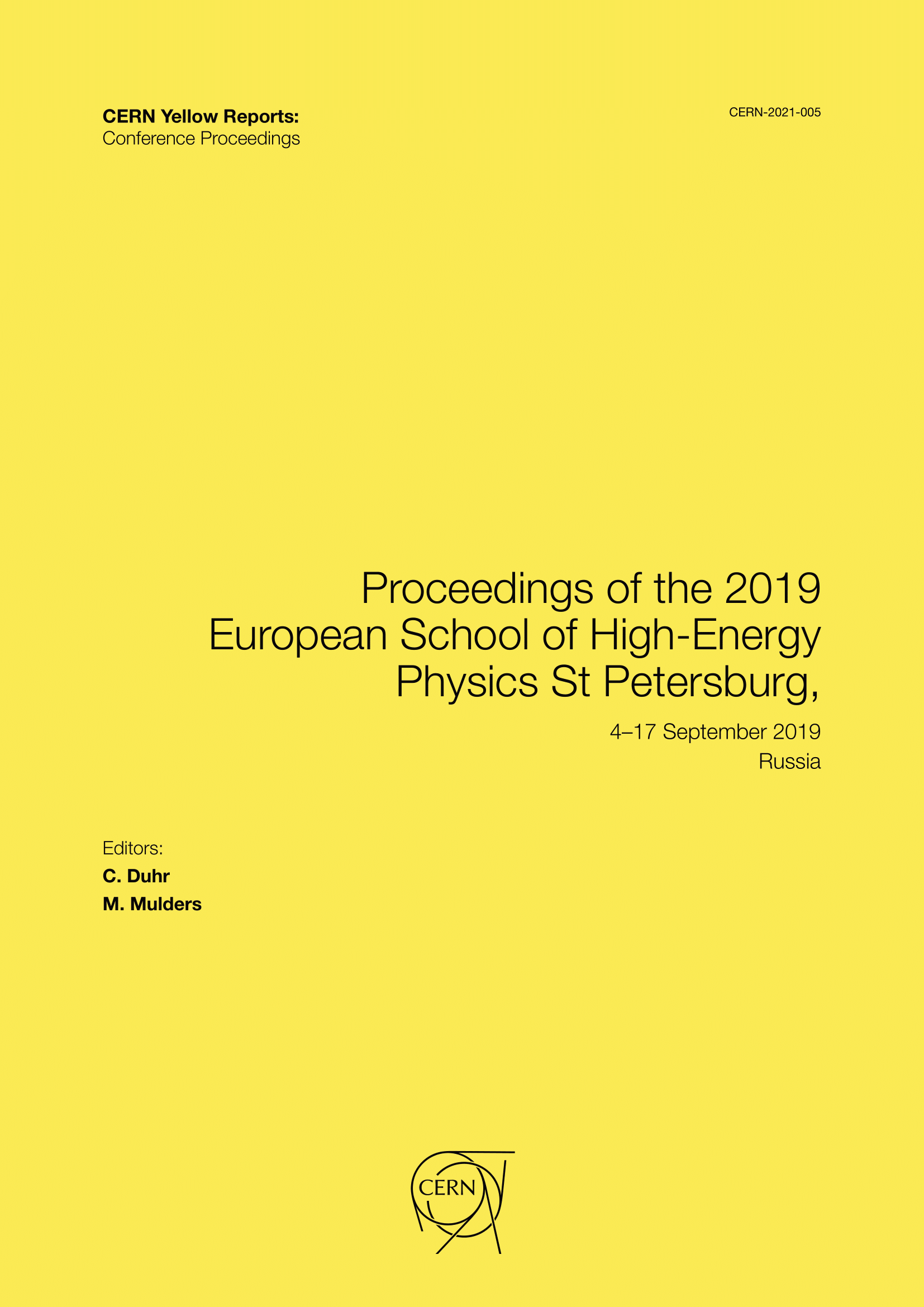Neutrino physics
DOI:
https://doi.org/10.23730/CYRSP-2021-005.85Abstract
The purpose of these lectures is to quantitatively summarize the present status of the phenomenology of massive neutrinos.
In the first lecture I will present the low energy formalism for adding neutrino masses to the Standard Model and the induced
leptonic mixing, and I will describe the status of the existing probes of the absolute neutrino mass scale.
The second lecture is devoted to describing the phenomenology associated with neutrino flavour oscillations in vacuum and in matter and the corresponding experimental results observing these phenomena.
In the third lecture I will present the minimal 3
Downloads
Published
Issue
Section
License
Copyright (c) 2022 CERN

This work is licensed under a Creative Commons Attribution 4.0 International License.
Authors who publish with this publication agree to the following terms:
- CERN retains copyright and publishes the work licensed under the Creative Commons Attribution License 4.0 that allows others to share the work with an acknowledgement of the work's authorship and initial publication in this series.
- Authors are able to enter into separate, additional contractual arrangements for distribution of the published version of the work (e.g., post it to an institutional repository or publish it in a book), with an acknowledgement of its initial publication in this series.
- Authors are permitted and encouraged to post their work online (e.g., in institutional repositories or on their website) prior to and during the submission process, as it can lead to productive exchanges, as well as earlier and greater citation of published work (See The Effect of Open Access).

